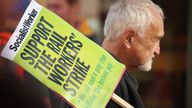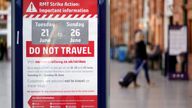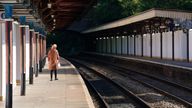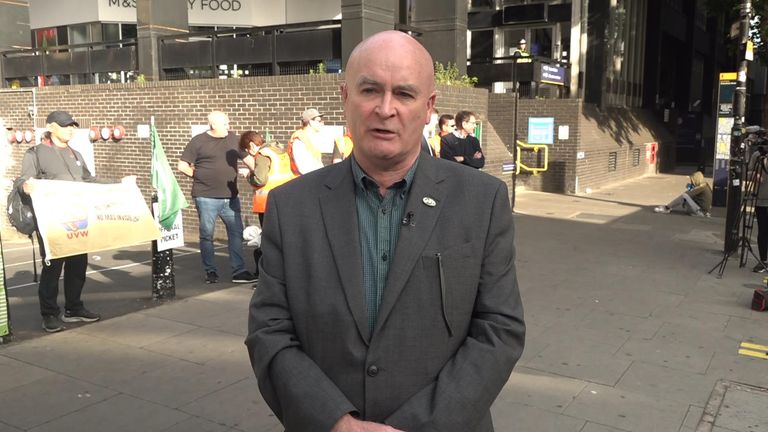Strikes see city centre trips plunge to COVID lockdown levels
The biggest rail strike in 33 years has left visits to city centres on a par with levels seen during COVID lockdowns, according to industry data.
Retail analysts Springboard said footfall in central London on the first day of the week-long disruption had endured the worst decline, on the previous Tuesday, of 27% by 1pm.
The measure for cities outside the capital averaged 11.2% though the impact was much less severe in market towns, Springboard said, as they saw a fall of just 2%.
‘Do not travel’ warnings – live updates on rail strikes
Central London’s decline chimed with warnings there ahead of the action that many businesses in retail and hospitality faced grim losses at a time they can least afford them after two COVID-hit summers followed by the cost of living crisis.
Springboard said it was clear that “major disruption to retail” had been caused.
Its insights director Diane Wehrle said: “The impact of train and tube strikes today on footfall is very clear to see, with a large proportion of people clearly working from home.
“The drop in footfall in central London and regional cities means that the gap from the 2019 footfall level has widened considerably – to -49.2% and -29.8%, which are levels that are equivalent to those recorded during lockdown.
“In contrast in market towns the gap from the 2019 footfall level has narrowed to just -2.5% below 2019 and -13.4% in Outer London.”
Read more: Everything you need to know about the rail strikes
Follow the Daily podcast on Apple Podcasts, Google Podcasts, Spotify, Spreaker
Location technology firm TomTom reported that congestion levels at 11am were higher than at the same time last week in a number of urban areas.
They included London (from 38% on 14 June to 51% on Tuesday) Cardiff (from 24% to 29%), Liverpool (from 24% to 30%), Manchester (from 27% to 34%), and Newcastle (from 18% to 20%).
The data also shows that people travelling by car or buses in the capital between 6am and 10am needed an average of 72% more time, compared to the 45% extra time needed on average during the past three Tuesdays.



